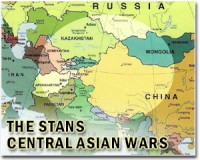| . |  |
. |
Wardak Province, Afghanistan (SPX) Jul 16, 2010 While some commands severely restrict artillery fires, one task force in Afghanistan has taken active steps to reduce collateral damage by developing an alternative method. Task Force King of the 173rd Airborne Brigade Combat Team came up with an alternative for indirect fire missions using solely high-explosive TNT. Soldiers of the 4th Battalion, 319th Airborne Field Artillery Regiment, crafted a way to fire non-exploding training rounds in the adjustment phase, and then switch to a lethal round in the fire-for-effect phase. Using this method, fewer live rounds are fired, reducing collateral damage and civilian casualties. "Our rules of engagement have been a challenge, because our enemy knows when we use artillery in a conventional fire fight there remains a very real possibility of unintended collateral damage," said Command Sgt. Maj. Dennis Woods, 4-319th AFAR. "In our efforts to avoid that, commanders have previously been far less inclined to use artillery. Insurgents are not stupid. This enemy has been using our ROE to avoid our fire support advantage... until now." They brought artillery back into the fight in the east-central province of Wardak. The less lethal training round in use is the M804A1 also known as the "smurf" round due to its blue color. It's a ballistic match for a live high explosive artillery round, meaning the round will have the same effects while in flight from the tube to the target. The difference is in the impact effects. "The 173rd ABCT gives up nothing in terms of effectiveness," Woods said. "The fire-for-effect round is exactly where it would be had we fired all explosive artillery rounds. This new approach that we are using here is more sensitive to the environmental impact issues along with the cultural issues that affect Afghanistan citizens." Woods said that because Afghanistan is an agrarian society, when high explosives are used, they contaminate the soil. When TNT, RDX, and HMX erode into the fields, crop yields can be harmed, so using less high-explosive rounds is good for Afghanistan's long-term future, as well as posing a far less likelihood for collateral damage. "The 173rd ABCT is aware how collateral damage separates us from the people. Since the people are the real objective, within a counterinsurgency war, our ability to increase public safety is the moral choice and the strategic choice that best delivers our vision." By reducing civilian deaths and collateral damage, the Soldiers are meeting the objectives that support the counterinsurgency or COIN doctrine. "The insurgents are choosing to fight among the people, employing them as human shields," Woods said, adding that insurgents also try to avoid artillery fire by hiding near protected structures. "This technique allows us to pursue the enemy despite his use of human shields. We can fire closer to protected structures with less potential for collateral damage," he said. Woods attributed the new technique to his Soldiers thinking outside the box to tailor fire effects and deliver "focused lethality." Every 155mm M777A2 cannon crew in the 4-319th AFAR has the 'smurf' round on location. "There aren't many armies that would go to this extent to increase public safety and reduce collateral damage like the 173rd Airborne is doing day in and day out," Woods said. A Task Force King Soldier commented from Sayed Abad, "when the blue training round arrived on location, I asked 'why they are issuing us less lethal rounds?' After learning their purpose in reducing collateral damage, I then asked 'why we haven't been doing this for the last nine years?'"
Share This Article With Planet Earth
Related Links US Army News From Across The Stans
 Outside View: Cynical thoughts
Outside View: Cynical thoughtsKabul, Afghanistan (UPI) Jul 15, 2010 Will the epitaph of the war in Afghanistan be motion without progress and knowledge without wisdom? After one particularly bloody day both for coalition and Afghan forces, one wonders. Many will recall the widely published, busy slide describing the current situation in Afghanistan. To which U.S. Army Gen. Stanley McChrystal responded, "When we understand that slide, we'll have w ... read more |
|
| The content herein, unless otherwise known to be public domain, are Copyright 1995-2010 - SpaceDaily. AFP and UPI Wire Stories are copyright Agence France-Presse and United Press International. ESA Portal Reports are copyright European Space Agency. All NASA sourced material is public domain. Additional copyrights may apply in whole or part to other bona fide parties. Advertising does not imply endorsement,agreement or approval of any opinions, statements or information provided by SpaceDaily on any Web page published or hosted by SpaceDaily. Privacy Statement |